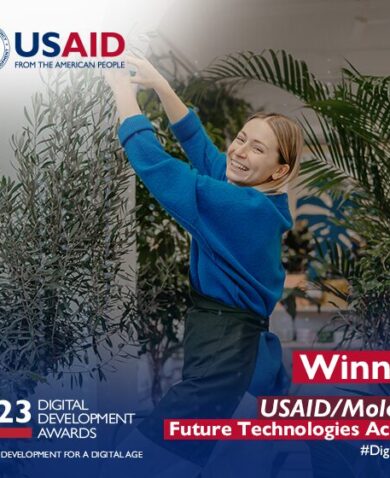
Big Data. Big Impact.
November 17, 2014 | 3 Minute ReadBig data is not just for big private sector firms in the developing world. It is having a big impact on development.
Every year the annual SEEP conference provides economic development practitioners with opportunities to learn about and discuss innovations and successes from projects around the world. While the annual conference is always full of new ideas and trend-setting professionals, the 2014 conference stands out for bringing the idea of “big data” to development in a way that demonstrates how powerful it can be as part of our project management, planning, monitoring, and evaluation activities. The theme of 2014 was “Scaling Impact in Inclusive Market Systems,” and the plenary session on “The ‘Big Data’ Revolution: Risks and Opportunities for Inclusive Market Development” was a great way to get people thinking about how data can be used to identify opportunities for scaling and ensuring inclusive growth.
Max Richman, a data scientist from GeoPoll and the DC Chapter Leader of DataKind, provided an entertaining and easily digestible background on Big Data. He guided attendees through examples of how Big Data has impacted our lives in the developed world, such as using data from our credit card purchase, online activities, and cell phone usage to develop parking apps, apps that tell us where the hottest sales are, and apps that make our lives a little more comfortable. In the minds of many, that is where big data starts and stops – in the developed world where nearly everyone and everything is connected to the Internet. Fortunately, Mr. Richman took us one step further into the developing world where big data has been used to create efficiencies in project implementation.
One example he provided was from work done by GeoPoll with USAID and the Development Credit Authority in Nigeria. Using cellphone-based surveying, GeoPoll helped USAID overcome the challenge of efficiently collecting data from a very specific group of people — farmers who are interested in business loans — in 15 targeted states. With data received from 800 respondents over two days, GeoPoll was able to help USAID and the DCA better understand the size and scale of the credit gap in the agriculture sector. Another example Mr. Richman presented from DataKind involved the development of an algorithm to analyze satellite images of villages in order to more efficiently identify potential beneficiaries, saving the client program over 100 days of manual village inspections.
Another powerful example of how big data can have a big impact on development came from Julie Peachey of the Grameen Foundation. Julie explained how while working in Uganda on an agriculture program, Grameen Foundation tracked data from farmers and used it to create heat maps. As program staff were in the field, they kept track of not only data about inputs and outputs at the farmer level, but also documented the questions that farmers were asking of the program staff. With multiple layers of data mapped, including data about inputs, production, outputs, diseases, and the farmers’ questions, the heat maps started to show an interesting pattern. Farmers were asking about “white powdery” disease before the disease actually spread to their villages. The maps showed how the disease was spreading across Uganda over time. It was clear that where farmers had asked questions about the disease, the disease arrived shortly thereafter. Upon realizing this trend, where the program could predict the pending arrival of the disease, it was able to better prepare farmers to mitigate the risks of the disease.
Mike Angus from MasterCard Advisors showed us another side of big data – how it can be used to increase access to finance for financially excluded populations. Leveraging the fact that 1.6 billion out of 2.5 billion financially excluded people have a mobile phone, it is possible to use mobile phone data on usage and payment behavior to predict financial stability and ability to repay loans. Using data about the timing, frequency, and amount of “top ups” on pre-paid cards, time of day calls are made, call duration, proportion of calls initiated by applicant, and the size of the network of people called, lenders can analyze risk and increase lending for a variety of loan types including short term and micro loans, home improvement loans, agricultural loans, and credit cards.
With examples like these, it is clear why big data is not just for big private sector firms in the developing world. It is having a big impact on development.























